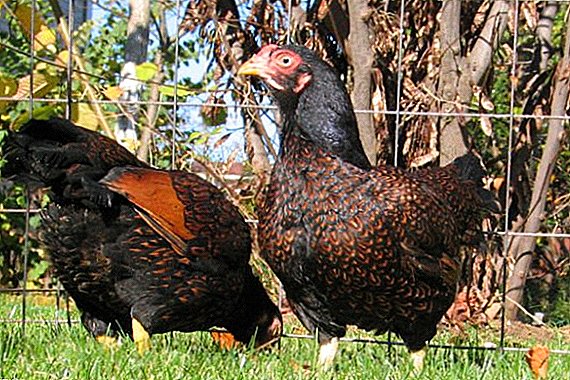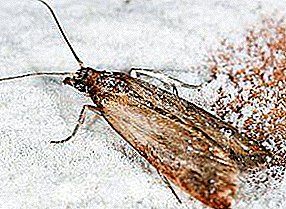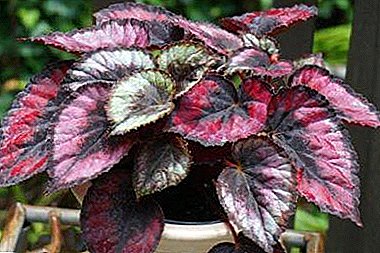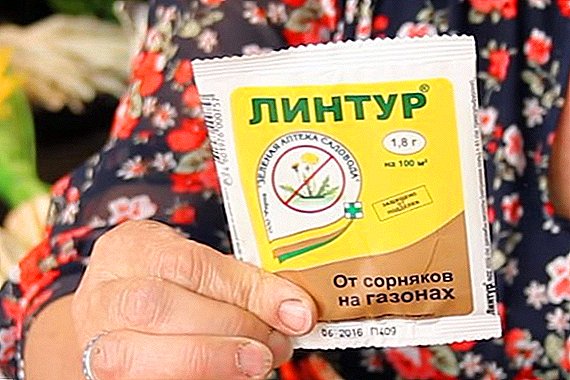 Yarrow grows almost throughout the CIS, excluding the north of Siberia and the Far East. This useful grass is literally under our feet: in forest glades and forest edges, in meadows, parks, along the tracks. But how useful is it and how can it help people in their daily lives? Let's try to figure it out.
Yarrow grows almost throughout the CIS, excluding the north of Siberia and the Far East. This useful grass is literally under our feet: in forest glades and forest edges, in meadows, parks, along the tracks. But how useful is it and how can it help people in their daily lives? Let's try to figure it out.
The chemical composition of yarrow
 To find out everything about yarrow, in particular, about the beneficial properties and contraindications, for a start let's look at its composition. Herb plants include alkaloids glucoside, stachydrin, achillein, betonitsin, achillein and essential oil, which also includes chamazulene; esters, camphor, thujone, borneol, cineole, glycosides - apigenin and luteolin. You also can not fail to pay attention to tannins, which include resins, amino acids, organic acids, carotene, vitamin K, ascorbic acid, formic acid, isovaleric acid, acetic acid, bitter substances, millefolid, matricin, rutin.
To find out everything about yarrow, in particular, about the beneficial properties and contraindications, for a start let's look at its composition. Herb plants include alkaloids glucoside, stachydrin, achillein, betonitsin, achillein and essential oil, which also includes chamazulene; esters, camphor, thujone, borneol, cineole, glycosides - apigenin and luteolin. You also can not fail to pay attention to tannins, which include resins, amino acids, organic acids, carotene, vitamin K, ascorbic acid, formic acid, isovaleric acid, acetic acid, bitter substances, millefolid, matricin, rutin.
Medicinal properties of yarrow
What the yarrow treats and what properties it possesses is known to both folk and traditional medicine. Yarrow has long been famous for its antiseptic, antibacterial and anti-inflammatory qualities.
Did you know? According to the legend, the ancient Greek hero Achilles healed the wounds of his warriors with the yarrow's grass. The ancient names of the plant, translated into the modern fashion, eloquently testify to the people who used the yarrow in the treatment - "grass soldier wounds", "blood grass", "consumptive grass", "yarrow knights".
 Thanks to its ability to dilate blood vessels, the yarrow is able to normalize and lower blood pressure. When ingested, this herb has a mild effect on internal organs and eliminates flatulence. For problems with the intestines, gall bladder and urogenital system, the yarrow acts as an antispasmodic. Tannins in the plant, along with essential oils and chamazulene have a wound healing, bactericidal and anti-allergic effect. An infusion of yarrow is able to increase blood coagulation without forming clots. In addition, the plant by its action can reduce heart beats, helping with arrhythmias and tachycardias.
Thanks to its ability to dilate blood vessels, the yarrow is able to normalize and lower blood pressure. When ingested, this herb has a mild effect on internal organs and eliminates flatulence. For problems with the intestines, gall bladder and urogenital system, the yarrow acts as an antispasmodic. Tannins in the plant, along with essential oils and chamazulene have a wound healing, bactericidal and anti-allergic effect. An infusion of yarrow is able to increase blood coagulation without forming clots. In addition, the plant by its action can reduce heart beats, helping with arrhythmias and tachycardias.
Recipes for yarrow in folk medicine
Infusions, decoctions and ointments prepared from yarrow, facilitate the condition of patients with many diseases. They are used in dental diseases, bursitis, gout and rheumatism, as well as in many diseases of the skin and some diseases of the internal organs. Yarrow has long been used by traditional medicine as the main and additional raw material for medicines.
Juice for ulcers and wounds
Yarrow juice in folk medicine has found wide application in the treatment of wounds and ulcers. To do this, fresh leaves are thoroughly washed and crushed, after which the juice is squeezed out of the resulting mass and used as a lotion or as a means to irrigate the affected skin.
Lotions with inflammation on the skin
 To relieve symptoms in skin diseases such as inflammation, itching for eczema and neurodermatitis, a yarrow is prepared from yarrow. To do this, take two tablespoons of milled herbs, half a liter of water, 1 tsp of vinegar and 100 ml of alcohol. The grass is boiled for about twenty minutes, then insist four hours. As soon as the infusion is ready, the rest of the ingredients are added to it. Prepared mixture smear the affected skin during the week.
To relieve symptoms in skin diseases such as inflammation, itching for eczema and neurodermatitis, a yarrow is prepared from yarrow. To do this, take two tablespoons of milled herbs, half a liter of water, 1 tsp of vinegar and 100 ml of alcohol. The grass is boiled for about twenty minutes, then insist four hours. As soon as the infusion is ready, the rest of the ingredients are added to it. Prepared mixture smear the affected skin during the week.
Ointment on the basis of yarrow from boils
On the basis of yarrow pharmacology produces an effective ointment against boils. However, it is quite possible to cook it at home. To do this, take fresh flowers and leaves of the plant, then crush about 50 grams of raw materials and pour 200 grams of refluxed pork fat, leaving ten hours to languish in a water bath. The finished ointment (still hot) is filtered and poured into a glass container and placed in a refrigerator for storage.
Compresses of yarrow from swelling, wounds and bruises
Our ancestors knew that in order to stop the blood from the wound, it is enough to rub a piece of yarrow in the fingers and sprinkle it on the affected place. The same with lotions. Take 30 grams of chamomile and yarrow (flowers), brew the flowers of both plants separately in 150 ml of water and also insist separately. Strain the mixture and mix, and before applying the compress - a little heat. It is important that the compress is in a hurt place for an hour.
Infusion to rinse with inflammation of the gums and mucous membranes of the mouth
 Yarrow successfully fights against oral diseases, such as periodontal disease, stomatitis, gingivitis and other inflammatory processes. For example, to relieve inflammation of the gums, a cotton swab is moistened in the juice of the herb and applied to the sore spot. For rinsing the mouth prepare a decoction of the color of yarrow. To do this, take 50 grams of flowers and 200 ml of water, brew and boil, but not more than five minutes. Rinse after eating.
Yarrow successfully fights against oral diseases, such as periodontal disease, stomatitis, gingivitis and other inflammatory processes. For example, to relieve inflammation of the gums, a cotton swab is moistened in the juice of the herb and applied to the sore spot. For rinsing the mouth prepare a decoction of the color of yarrow. To do this, take 50 grams of flowers and 200 ml of water, brew and boil, but not more than five minutes. Rinse after eating.
Healing bath with yarrow
Baths from the collection of herbs, which includes the yarrow help with the following diseases: eczema, scaly psoriasis, neurodermatitis, prickly heat, diathesis, dermatitis. They are great to help soothe irritated, dry skin. Foot bath with the addition of yarrow relieve fatigue, help to fight fungi and bad smell. Men, sessile baths of peppermint, chamomile and yarrow help fight prostatitis. To remove skin irritation and calm the nerves, you need to brew 200 grams of yarrow herb in three liters of boiling water. Let insist half an hour. Then add the mixture to the bath.
Important! It is better to perform such a relaxing procedure at night, and after a bath, wrap yourself in a warm blanket or bathrobe.
The use of yarrow in gynecology
Yarrow, along with its healing properties for women, has long been actively used in gynecology. A special effect is observed in the treatment of uterine bleeding with a liquid extract of a plant. In addition, the drug on the basis of the yarrow is quite effective in the treatment of fibroids, with large blood loss, during critical days and inflammatory processes in the uterus.
 Nevertheless, tea from a yarrow and its application will be useful not only in gynecology, but also to young mothers, as the described plant perfectly improves lactation. Helps a wonderful drink and menopause. With the help of preparations based on yarrow, patients with erosion are relieved, and they are often used as an antimicrobial agent in inflammatory processes in the mucous membrane of the female organs. Liquid extract treat endometritis, endometriosis, cystitis, inflammation of the cervical canal.
Nevertheless, tea from a yarrow and its application will be useful not only in gynecology, but also to young mothers, as the described plant perfectly improves lactation. Helps a wonderful drink and menopause. With the help of preparations based on yarrow, patients with erosion are relieved, and they are often used as an antimicrobial agent in inflammatory processes in the mucous membrane of the female organs. Liquid extract treat endometritis, endometriosis, cystitis, inflammation of the cervical canal.
Douching yarrow helps with colpitis, thrush, candidiasis, vulvitis, Bartholinitis. Also, a rather frequent problem of women giving birth is erosion of the cervix, and douching and lotions with a cotton swab are good for fighting it.
How to use yarrow in cosmetology
The yarrow, thanks to its properties, well tones, strengthens and disinfects the skin. It can be seen in the composition of many cosmetics: for example, lotions, tonics, masks and cosmetic milk. Often, with the help of baths for hands and feet, they take care of irritated, tired or just unkempt coarse skin. The benefit of the yarrow is enhanced by the fact that it has the ability to regenerate tissue. Care with the help of this plant for oily and problem skin in the shortest possible time works wonders - it slackens, becomes elastic, and pustules, acne and allergic rashes quickly disappear from the skin.
 For the treatment of acne, you can prepare an alcoholic extract of yarrow herb. To do this, take 25 grams of dry, chopped herbs, pour into a glass container and pour 100 ml of vodka. Let the composition infuse in a dark place for a week, and then lubricate acne twice a day (point). Yarrow helps to cure dry, brittle and damaged by coloring or chemical treatment of hair. It is also good to use infusions of herbs against dandruff, as this will save you from feeling dry and give your hair a healthy look and shine. To stimulate hair growth, take 10 grams of crushed dried flowers, pour 250 ml of boiling water and let it brew for about an hour. This solution is recommended to rinse your hair after washing, and if the mixture has cooled, then heat it up before use.
For the treatment of acne, you can prepare an alcoholic extract of yarrow herb. To do this, take 25 grams of dry, chopped herbs, pour into a glass container and pour 100 ml of vodka. Let the composition infuse in a dark place for a week, and then lubricate acne twice a day (point). Yarrow helps to cure dry, brittle and damaged by coloring or chemical treatment of hair. It is also good to use infusions of herbs against dandruff, as this will save you from feeling dry and give your hair a healthy look and shine. To stimulate hair growth, take 10 grams of crushed dried flowers, pour 250 ml of boiling water and let it brew for about an hour. This solution is recommended to rinse your hair after washing, and if the mixture has cooled, then heat it up before use.
Did you know? Yarrow was used not only by warriors and healers, it was sown by ancient artisans around their workshops. In case of any injury the medicine was always at hand. In addition, the ancient plants endowed with magical properties, used the yarrow in witchcraft and for the imposition of damage.
Preparation and storage of medicinal raw materials of a yarrow
 All aboveground parts of a plant are used as medicinal raw materials. Yarrow blooms throughout June or July, and its seeds ripen in August. Collect inflorescences better at the beginning of flowering, because it was then that they collected more nutrients. Together with the inflorescence, they cut off the top of the stem and leaves, after which the cut yarrow is collected in bunches and suspended for drying in a dry room without direct sunlight. Storage room should be ventilated. Dried yarrow collection crushed and stored in paper or cloth bags, can be poured into a glass container. Raw materials are usable for two years.
All aboveground parts of a plant are used as medicinal raw materials. Yarrow blooms throughout June or July, and its seeds ripen in August. Collect inflorescences better at the beginning of flowering, because it was then that they collected more nutrients. Together with the inflorescence, they cut off the top of the stem and leaves, after which the cut yarrow is collected in bunches and suspended for drying in a dry room without direct sunlight. Storage room should be ventilated. Dried yarrow collection crushed and stored in paper or cloth bags, can be poured into a glass container. Raw materials are usable for two years.
Contraindications and harm from yarrow
 Categorically you can not take drugs with yarrow, without examination by a doctor, women in the situation, children under twelve years old, people suffering from epilepsy, varicose veins and thrombophlebitis. Despite the obvious benefits of yarrow in medical use, there are certain contraindications. For example, to take the drug, even if you do not have any of the above reasons, for a long time can not. Yarrow has in its composition strong and aggressive substances that with prolonged use can provoke allergic reactions: itching, rash, inflammation of the skin. Headaches and dizziness may also occur.
Categorically you can not take drugs with yarrow, without examination by a doctor, women in the situation, children under twelve years old, people suffering from epilepsy, varicose veins and thrombophlebitis. Despite the obvious benefits of yarrow in medical use, there are certain contraindications. For example, to take the drug, even if you do not have any of the above reasons, for a long time can not. Yarrow has in its composition strong and aggressive substances that with prolonged use can provoke allergic reactions: itching, rash, inflammation of the skin. Headaches and dizziness may also occur.
Important! Allergy sufferers should test the drug on the inside of the elbow before taking it.
There is a belief: a bunch of dried yarrow, stored at home, will repel all diseases from his household. Anyway, this wonderful herb has been healing people for many centuries.












